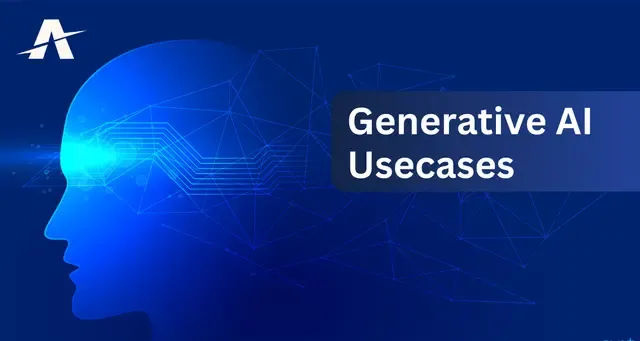
Augmented Reality (AR) and Virtual Reality (VR) are changing how buildings are designed, built, and maintained. These technologies are making construction projects more efficient and easier to understand for everyone involved. In this blog, we’ll look at 10 practical ways AR/VR is being used in construction and provide some market statistics that show how fast these technologies are growing.
1. Better Design Visualization
In the past, architects and builders worked with 2D blueprints, which can be hard to picture in real life. With AR and VR, you can now create 3D models of buildings before construction even starts. VR allows clients and project teams to walk through these models virtually and see exactly how the building will look. AR lets you place these digital models on top of the real world, making it easier to see how the building will fit into its surroundings.
Computer Vision Services play a key role in enhancing AR's ability to accurately map the environment and overlay 3D models. Furthermore, Generative AI Solutions can automatically generate design variations based on predefined parameters, making the design process faster and more flexible.
2. Improved Collaboration
Construction projects involve many people – from architects and engineers to contractors and clients. AR and VR make it easier for everyone to work together. With these technologies, all team members can view the same 3D model of the project, even if they are in different locations. This reduces misunderstandings and makes problem-solving faster.
Generative AI Services can enhance collaboration by using predictive algorithms to provide real-time updates and suggest solutions based on past data, while Generative AI Applications ensure seamless integration between different stakeholders, improving communication.
3. Safety Training
Construction sites can be dangerous places, so safety is very important. VR can be used to train workers in realistic virtual environments, allowing them to learn how to handle dangerous situations without getting hurt. AR can also give real-time safety warnings on-site, helping workers avoid hazards like unstable structures or heavy machinery.
By incorporating Generative AI Solutions, safety training can become more adaptive. AI can generate different training scenarios based on specific job roles, while Computer Vision Services can monitor workers during training to ensure protocols are followed.
4. More Efficient Project Planning
AR and VR can help project managers plan the construction process more efficiently. VR allows teams to visualize each step of the construction process, while AR can be used to visualize where materials and equipment should go. This helps to avoid mistakes, save time, and reduce costs.
With Generative AI Applications,project managers can automate the scheduling process by generating optimal workflows and timelines. Computer Vision Services also allow for real-time tracking of materials on-site, ensuring project efficiency.
5. Remote Assistance
Sometimes, experts can’t always be on-site when they’re needed. AR allows workers to share live video of their work and get real-time help from experts in different locations. The expert can even draw or write instructions that appear on the worker’s AR glasses, helping them fix problems faster.
By using Computer Vision Services, workers can stream high-quality visuals in real-time, and Generative AI Services can assist experts by analyzing the situation and suggesting quick solutions. This reduces downtime and makes remote assistance more effective.
6. BIM Integration
Building Information Modeling (BIM) is a technology used to create 3D models with all the data about a building’s design, structure, and materials. AR/VR can integrate with BIM, allowing teams to interact with these models in real-time. This helps ensure everything is built according to plan.
Generative AI Solutions can automatically update BIM models as construction progresses, whileComputer Vision Services ensure that these models accurately reflect the real-world environment, improving project accuracy.
7. Virtual Tours for Clients
VR allows clients to take virtual tours of the project before it’s built. They can walk through the building and provide feedback on the design. This saves time and prevents costly changes later in the process. Developers can also use virtual tours to show potential buyers what the finished building will look like, even before it’s completed.
Using Generative AI Applications, virtual tours can be customized based on client preferences, automatically adjusting layouts or designs in real-time. This level of customization improves client satisfaction and helps developers sell projects faster.
8. Maintenance and Facility Management
AR and VR can also be useful after a building is completed. Maintenance workers can use AR glasses to see real-time information about the building’s systems, such as electrical or plumbing. This helps them make repairs more efficiently. VR can simulate different maintenance scenarios, allowing facility managers to plan for both routine and emergency situations.
Computer Vision Services can identify problem areas in real-time, while Generative AI Applications can suggest the most efficient repair methods based on the specific issue, making maintenance smoother and more cost-effective.
9. Quality Control
With AR, workers can compare the construction progress with the original design in real-time. This helps them spot any issues and fix them before they become bigger problems. This real-time quality control reduces errors and ensures that the project stays on track.
By integrating Generative AI Service and Computer Vision Services, quality control can become automated. AI can compare ongoing work with design models and flag discrepancies instantly, ensuring that standards are met consistently throughout the project.
10. Environmental Impact
Sustainability is important in construction today. VR can simulate how a building will interact with its environment, such as sunlight exposure or energy efficiency. This helps architects design eco-friendly buildings. AR can also help monitor the building’s energy performance over time.
Generative AI Solutionscan suggest eco-friendly alternatives during the design phase by running environmental impact simulations, while Computer Vision Services can monitor a building’s energy usage in real-time, ensuring sustainability goals are met.
Market Statistics for AR/VR in Construction
Global Market Growth: The global AR/VR market was valued at USD 28.71 billion in 2021 and is expected to grow at a rate of 39.4% per year through 2030. This shows that these technologies are becoming more popular in industries like construction.
AR/VR in Construction:The AR market in construction is projected to grow from USD 1.4 billion in 2020 to USD 11.14 billion by 2025, with a growth rate of 52.9% per year. VR is also growing at a fast rate of 46.1%.
Increased Investment:A survey found that63% of construction companies are planning to invest more in AR/VR over the next five years to improve how they manage projects.
Productivity Gains:Companies using AR/VR have seen a 30% increase in productivity, as these technologies help reduce mistakes and speed up work.
Safety Training Impact:Companies using VR for safety training have reduced accidents on job sites by up to 45%, leading to lower costs for injuries and insurance.
Client Satisfaction:65% of clients said that virtual tours helped them make better decisions and understand the project better.
BIM and AR/VR Adoption: 70% of construction companies now use Building Information Modeling (BIM), and 40% of them are also using AR/VR to enhance these models.
The construction industry is rapidly adopting AR and VR technologies. These tools can help you improve project planning, enhance safety, and give clients a better experience. If you're ready to take your construction projects to the next level withGenerative AI Services and Computer Vision Services, Askgalore can help.












